Salamanca is one of the places in Spain that fascinated me the most, its architecture is beautiful, truly in line with its nickname the “golden city”, as it is often referred to. When you go, you must visit the Ieronimus exhibit, which is a visit to the cathedral towers, also a World Heritage Site and has a history dating back 9 centuries.
The cathedral can be divided into two parts, the old cathedral and the new cathedral, and has many artistic zones which are worth seeing. On this occasion, I’m only going to speak about the visit to the Gothic cathedral towers, which was recommended to us by the guide. It’s my obligation as a amazed tourist to tell you that you can’t go to Salamanca without climbing up the towers (more than 100 metres high! ), it’s a unique and incomparable experience, and is very well preserved, plus the tour is long, it’s not just about taking photos.
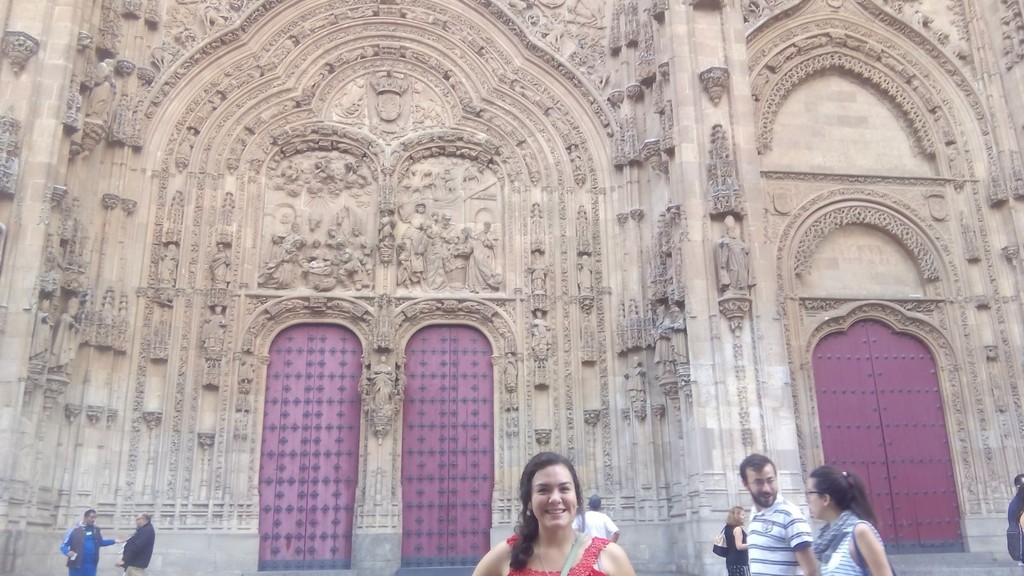
Ieronimus tour
If you pay for the tour you will have visual and physical access to the cathedral's many wonders, like the old part of the Cathedral, the terrace of Mocha Tower, the Tower of Gallo, the new part of Cathedral, the Anaya terrace and the clock room (which is the highest point).
I’m sure you’re asking yourself why the exhibition is called Ieronimus, as it doesn’t seem to have much to do with the Cathedral. The name corresponds to the Latin name for Jerónimo de Perigueux (1060-1120? ) who was a very famous Spanish bishop, known for his key role in the reconquest. He was sent to Salamanca in 1102 to take charge of the reconstruction of the Santa María church: this helped Salamanca keep its famous cathedrals.
The medieval towers currently look to be in good condition but this wasn’t always the case. Numerous historical, architectural and archaeological studies have been part of the cathedral’s restoration because formerly they were in ruins.
It would be very difficult to climb the 100 metres, considering that the stairs are very old and narrow, but the tour is designed to make you forget about this, because on every “floor” or determined number of steps, you will find rooms containing objects, stories, instruments and many interesting things to see, such as the warden’s room, the mayor’s office, the high room and the dome room. In many of these rooms, they exhibit old musical instruments as well as sheet music, maps, books and religious relics that were gifted to the bishops and monks in charge of the cathedral. You will truly feel as if you have been taken back to the medieval era because the music in the background helps to portray what cathedral life was like in that ancient time which was important in Spain's history.
Mazmorra Room
The first room that you will see is the Mazmorra Room which was formerly closed but was open until 1614 for the staff of the cathedral to access the towers. In this room, you will find the ticket office and some useful leaflets that come with your ticket.
Dome Room
My favourite room was the Dome Room because it was the one which underwent the most restorations. It is found in the among the bells and was reinforced as in 1705, it was affected by a fire and in 1755 it was damaged by an earthquake. This was a very significant earthquake as it destroyed much of the cathedral’s structure, and also affected the city of Salamanca in general, including parts of Portugal. In the room, there is a recreation of the earthquake and how it affected the structure. In the room, there is a projector which uses the actual structure of the cathedral as a background, during the recreation cracks are added and the structure deteriorates at the same time as the audio stimulates the noise of the earthquake, as well as the chaos among the people there.
Terrace of the Mocha Tower
The first time I climbed the Terrace of the Mocha Tower I thought that it was the end of the tour, and even if it was it wouldn’t have bothered me. From this point, you can see the old parts of the city as well as “New Salamanca” crossing the river, which for many years was a natural border. From the terrace, you can take photos in which the cathedral appears in the background, as well as the Gallo Tower. The view is amazing and in my opinion, nothing needs to be improved, even if you don’t believe me.

Gallo Tower
The creators made the tour so that you can admire the Cathedral from different heights and angles. A metallic walkway helps you to walk along the roof that links the old part of the cathedral to the new part, with the Gallo tower close by. This lets you appreciate the architectural detail more closely, as well as the beautiful and distinctive colour of the stone.
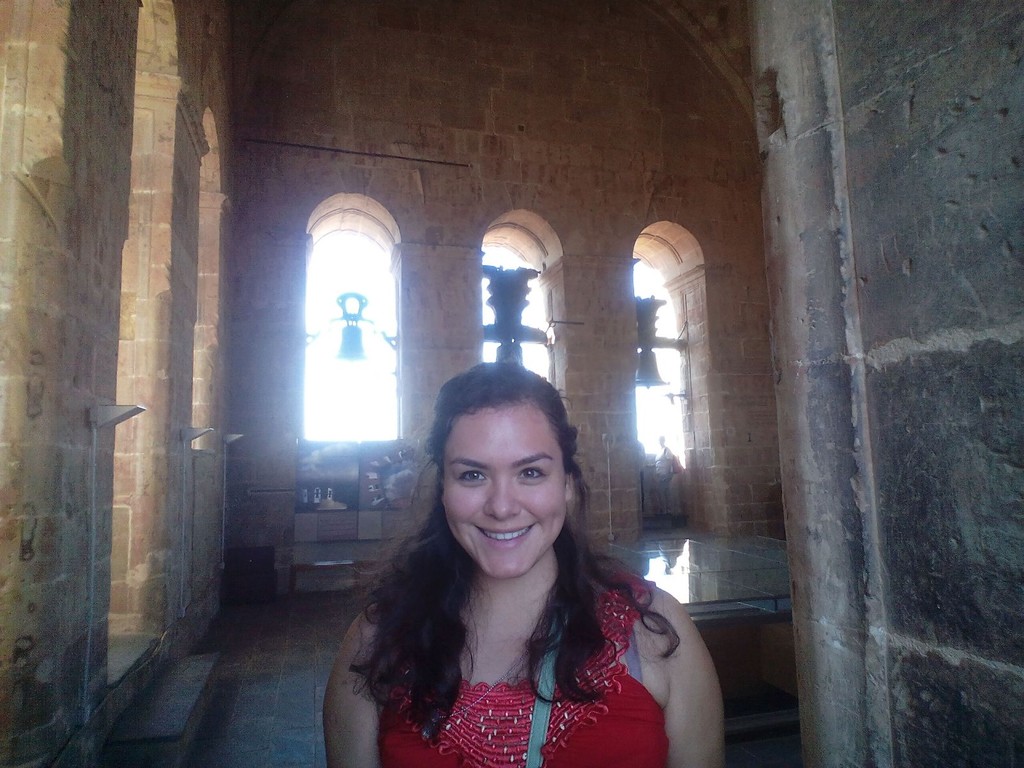
Clerestory of the New Cathedral
The tour not only takes you outside the cathedral as you might think, the creators keep surprising you with their efforts, so you can’t help but fall in love with the cathedral. The next thing we saw, after climbing down the spiral staircases (named Mallorca) was the clerestory of the New Cathedral…from above! From this height, you can appreciate more its gigantic columns (the only thing on your mind is how did they build them? ), the domes and the arches of the transept. It is very important to respect the silence in this room, but you can also take photos and wonder at the oldest architectural element of the cathedral, which was what I most liked visiting. If you are lucky, you could witness a mass taking place, however, you will never see the cathedral empty because there are large numbers of religious people and mostly tourists who come to admire it. If you go on a weekend you can wait for another wedding, since every now and then there are carriages and brides awaiting their wedding.
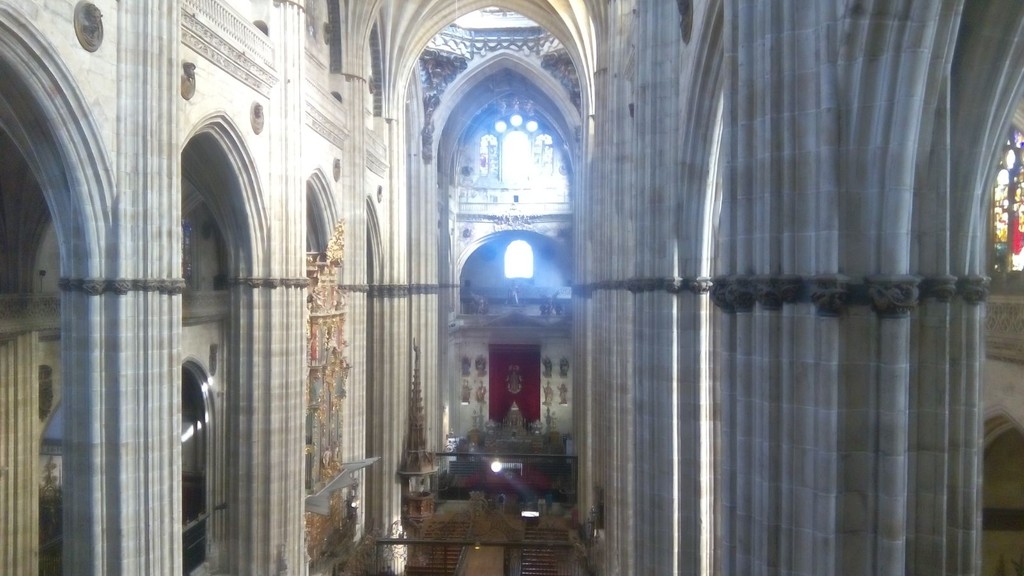
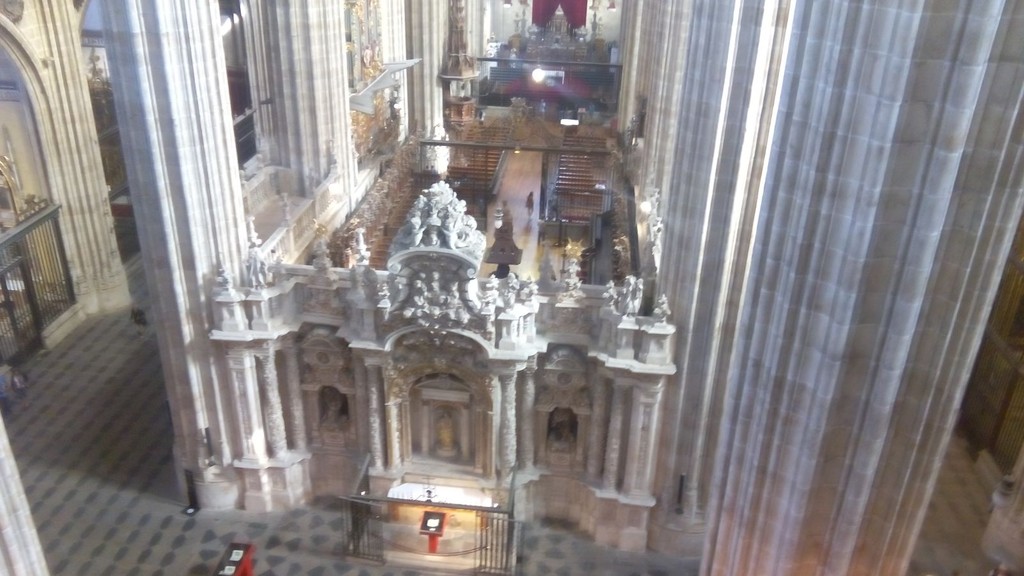
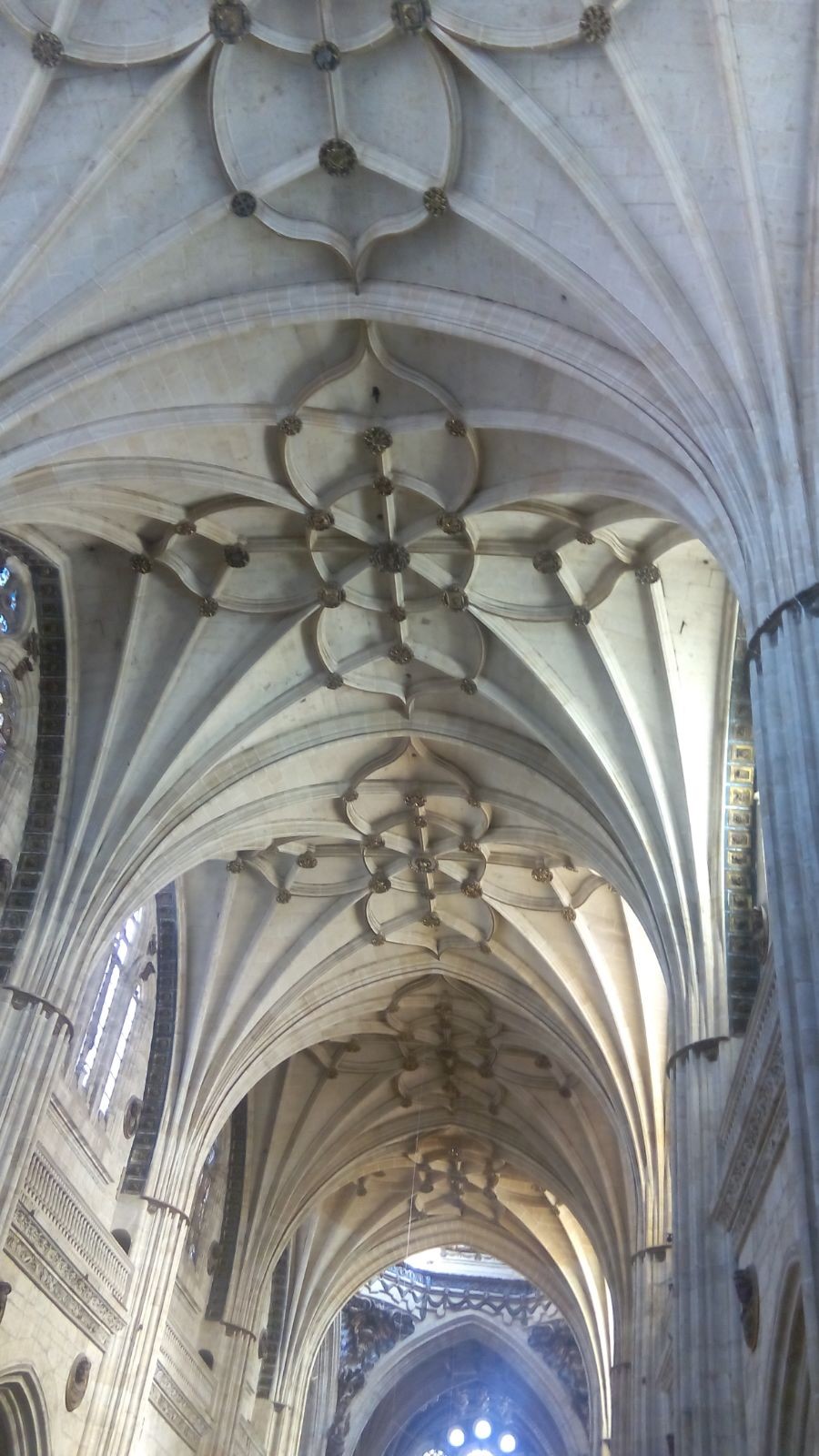
North terrace of Plaza de Anaya
You will then climb a bit more (don’t worry you won’t feel it) to reach the North Terrace of Plaza de Anaya, where you will enjoy a walk among pinnacles and gargoyles. From this point, you can see the Convent of San Esteban, the Plaza de Anaya, the Plaza Mayor and other historical buildings. You can see the clock (in the clock room) from here.
Clock Room
The most impressive room and the one with which the tour concludes is the clock room, this is the highest point from which you can appreciate both the cathedrals as well as the city, because you can see any point from here as there are viewpoints on every side. In this room, the church bells ring and there are at least 12 of them, you can see the roof which is even bigger and deeper. As the stairs are extremely narrow and no more than one person can fit at a time, the ascent and descent are usually managed by a traffic light, with which for three minutes you can only climb the stairs and after this time, only descend. If, like us you are lucky, you can hear how they ring the bells from this point. The view is unbeatable, the air is cleaner and for a moment you feel as if you are in the 11th century, which is around the year from which this pair of cathedrals began construction.
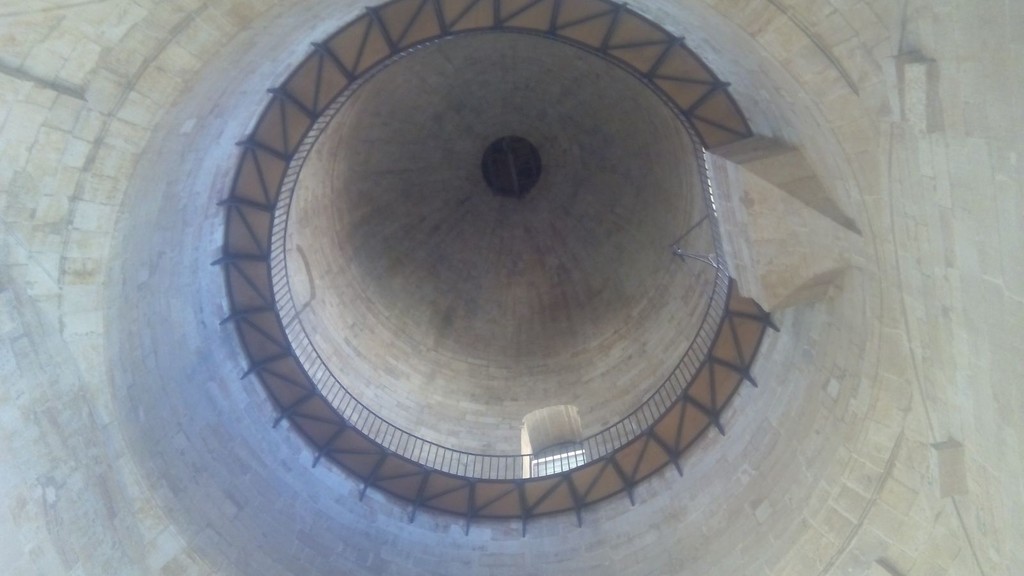
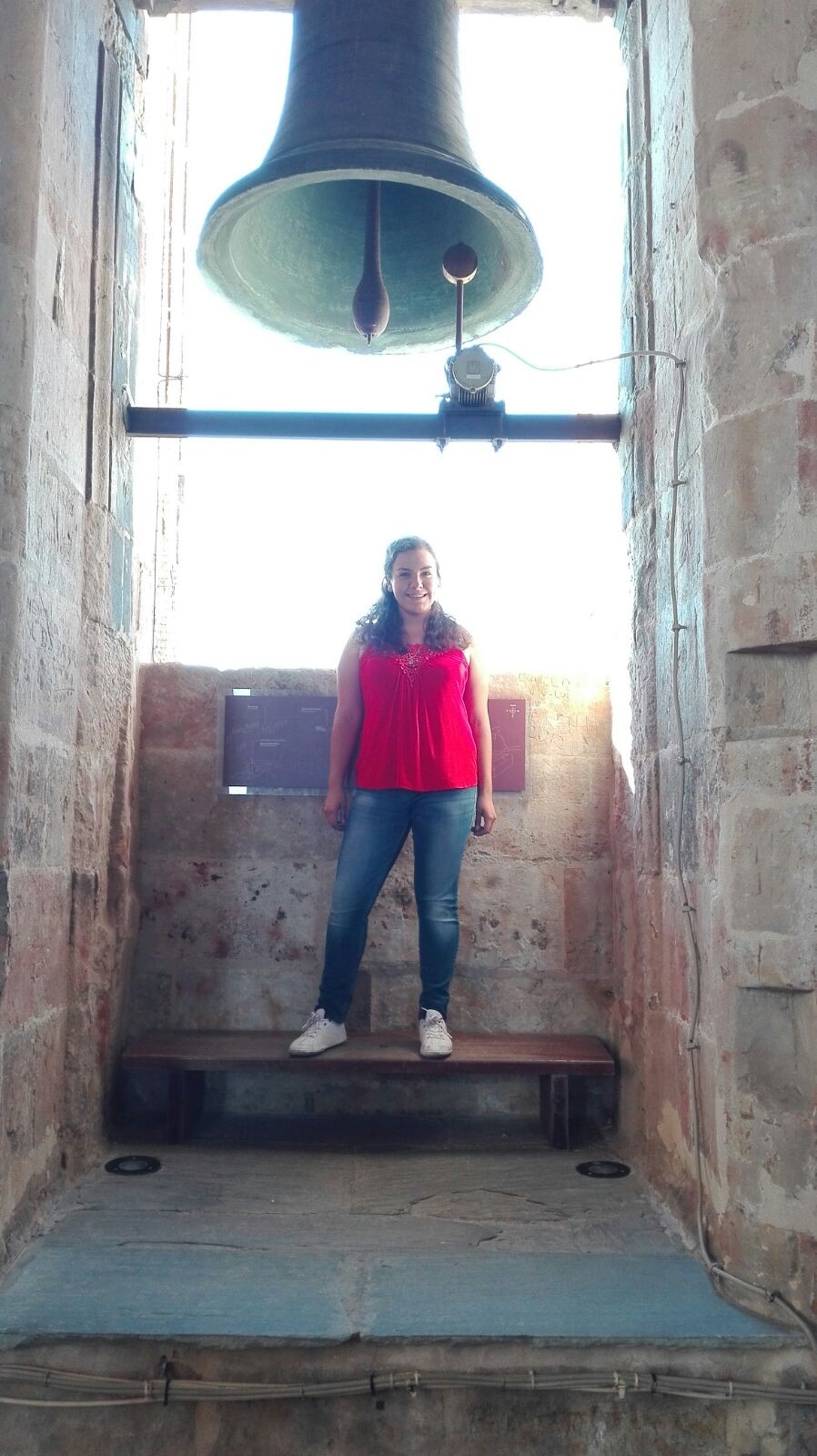

Recommendations
It’s important that during the tour you pay attention to the restoration processes which are only noticeable if you focus. There is old “graffiti” which isn’t graffiti, it is faint red paint which shows words written in Latin as a means of protest. Unfortunately, you will also see scribbles from tourists writing their names, which is such a shame for such an old and important architectural work.
Be very careful with the steps, as not all of them have the same height and structure, remember that it is ancient stone and it’s a good idea to use the handrails.
If you’re interested in taking the best photos, I suggest that you go at 6pm, because on several occasions the sun affected our photos.
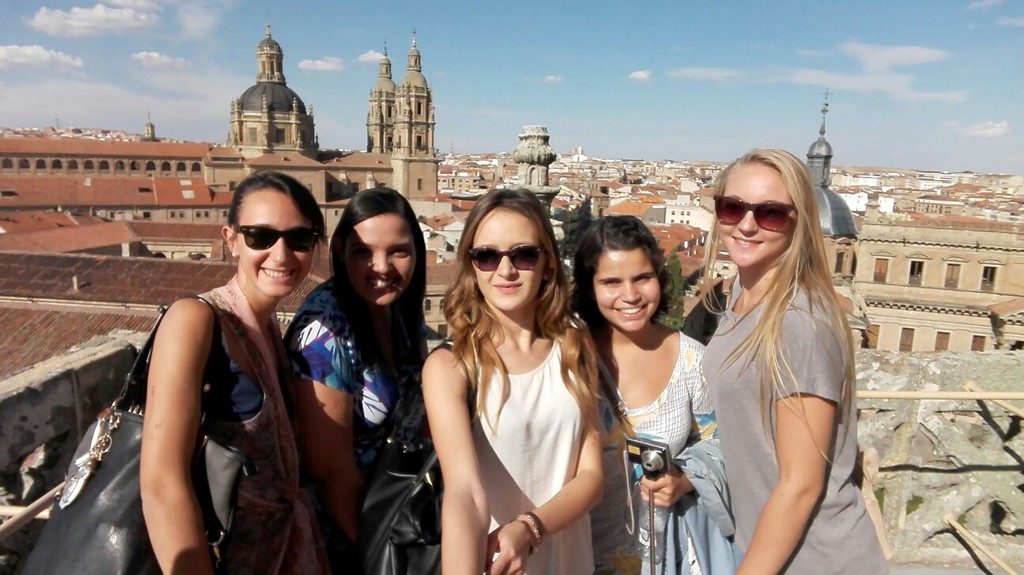
How much does it cost?
The cost of the visit is €3. 75. The price is completely worth it; you won’t regret it.
Opening hours
Visits are from 10am to 8pm, but you should arrive by 7pm at the latest so you are guaranteed admission.
 What to see Salamanca,
Salamanca,
Spain
What to see Salamanca,
Salamanca,
Spain




































